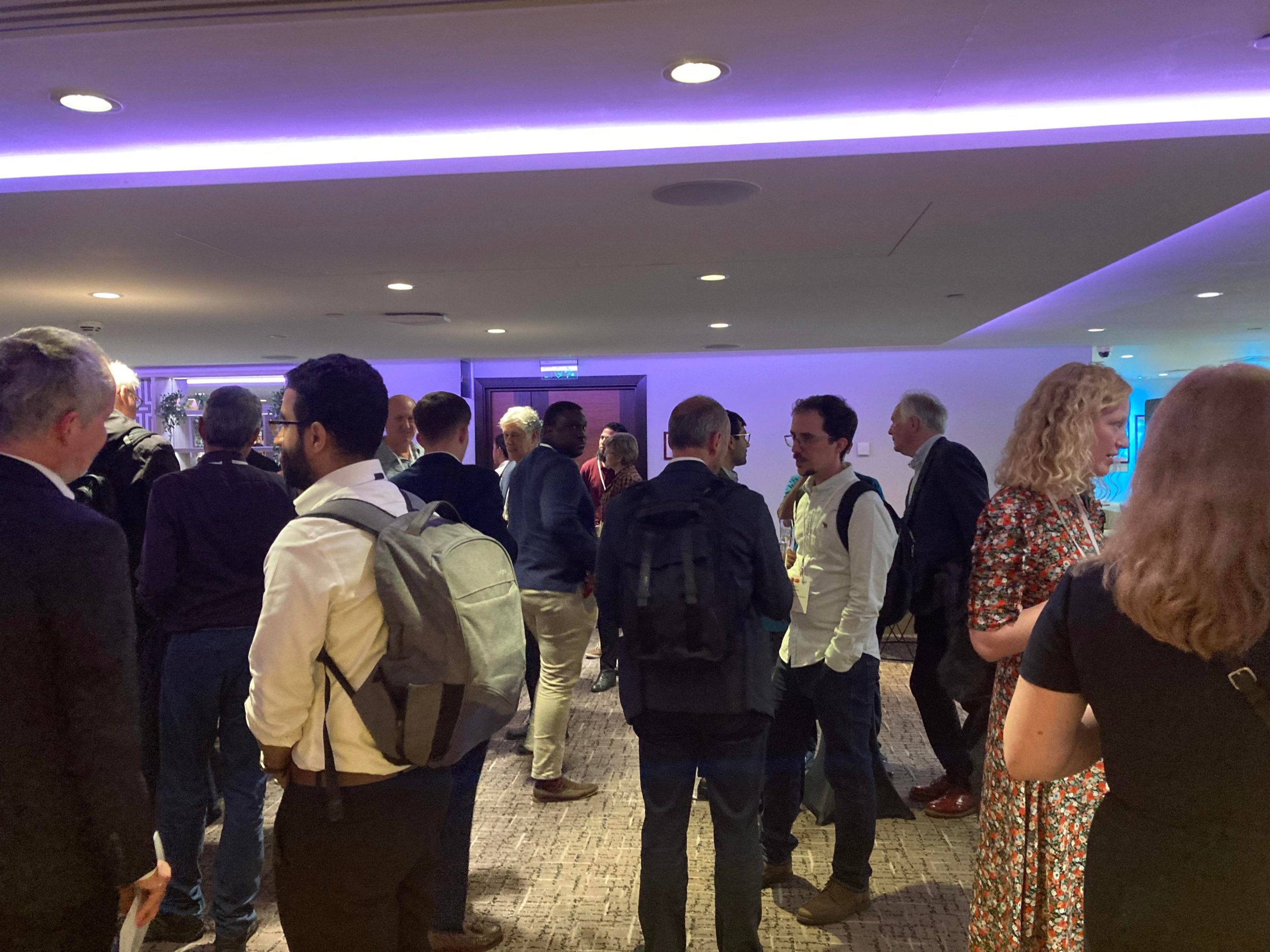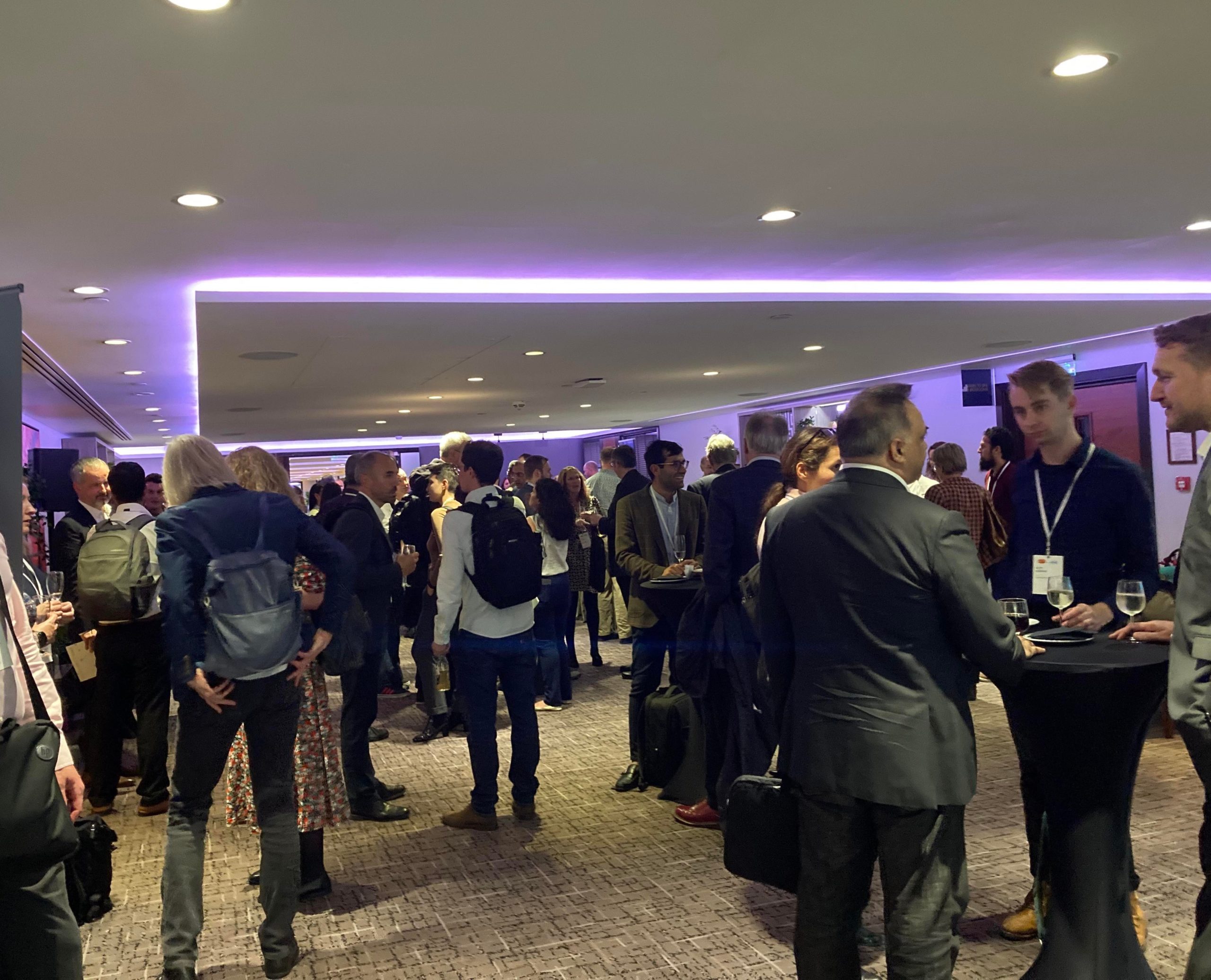
As science and technology continue to advance, so does the potential to revolutionise healthcare, and Advanced Therapies Integrates 2022 provided a platform to discuss the most cutting-edge field in medicine. As one of Life Science Integrates’ (LSI) most specialist conferences, run in partnership with Cell and Gene Therapy Catapult, the event allowed delegates from across the sector – academics, innovators, regulators, investors, CDMOs, & more – to come together to discuss how we can build on our progress in the ATMP space to transform patient outcomes. Held live in-person for the first time, Advanced Therapies Integrates attracted 282 attendees who enjoyed the support of 20 sponsors & partners, a wealth of product exhibitions, and interviews and panel discussions featuring over 60 speakers covering three core themes of investment, translation, and manufacturing.
“10 years on, we’re in a completely different place”
The event was opened by Matthew Durdy, CEO of headline sponsor Cell and Gene Therapy Catapult, who recapped the incredible progress of the sector. “10 years ago, it was a very different place,” he said, explaining how the support behind advanced therapies has transformed, with the sector now fully backed by big Pharma and government alike:
“government is writing the growth of advanced therapies into their plans for growth.” He finished with a heart-felt anecdote of a young girl who received life-changing Car-T therapy for leukaemia 10 years ago – “every year I’d see her family put out social posts – ‘1 year cancer free’, ‘2 years cancer free’, and then after 10 years, ‘cured’.”
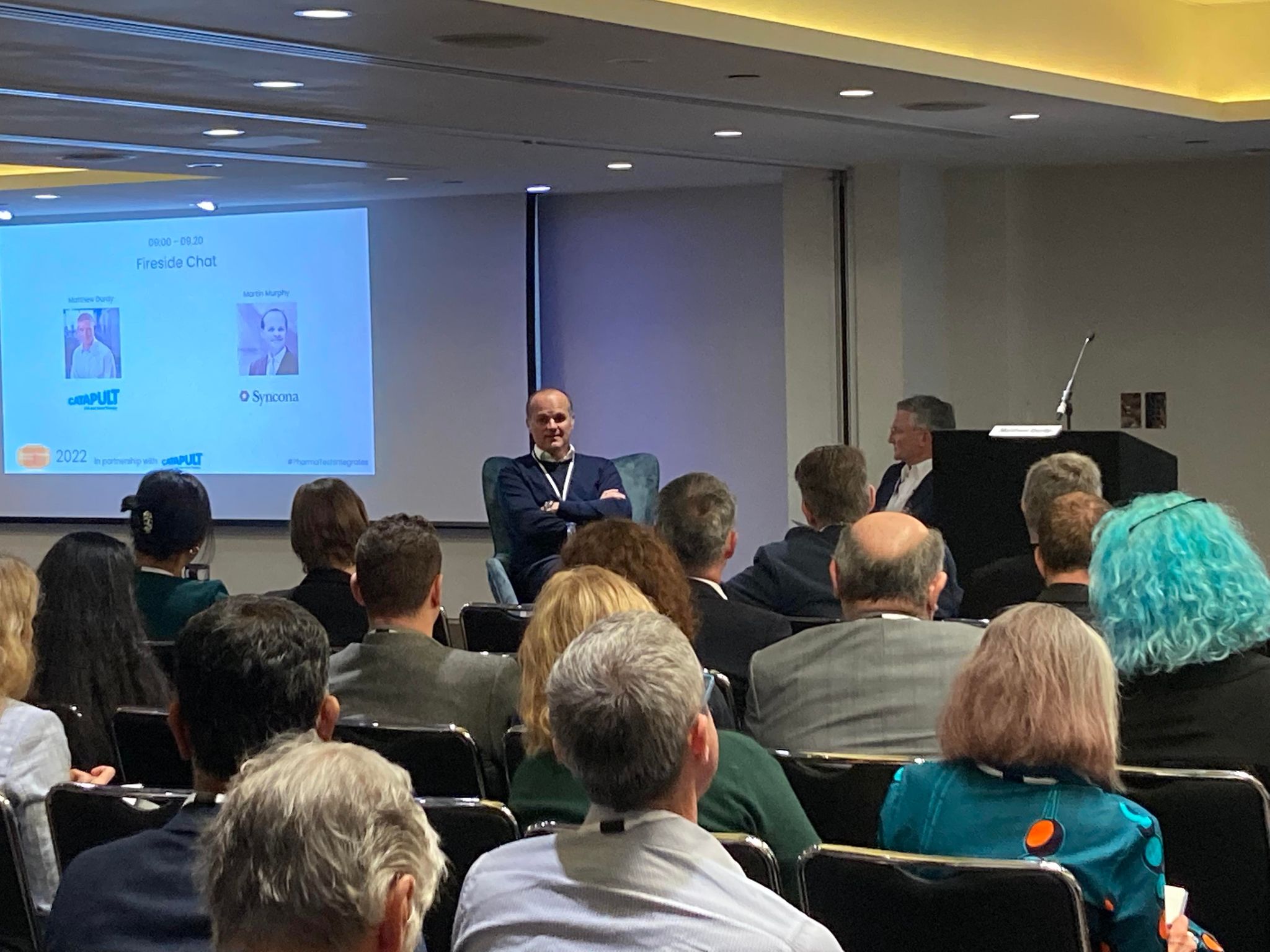
“What’s the single currency of our industry? It’s efficacy”
Matthew was joined by Martin Murphy, CEO of Syncona Ltd, for an insightful discussion about the current position and future potential of ATMPs. The talk focused on the incredible efficacy of cell and gene therapies that sets them apart from conventional medicines: “these drugs do save people’s lives in a revolutionary way.” Martin weighed up the benefits of autologous vs allogenic forms, with excitement for the widespread growth of autologous therapies combined with the big opportunity for allogenic therapies in solid tumour treatment. Looking to the future, he outlined the predicted shift from niche to larger indications: “the end game is going to be therapies that treat more complex diseases which affect 10s of millions of patients.”
“We’ve got decision-makers making decisions without experts”
The second fireside chat featured Nicola Redfern, consultant at NJ Redfern Ltd, who shared her experienced views on the cost barriers the ATMP sector is currently facing. She outlined a dual issue – the need to drive down costs across the whole pathway, and the need to increase investment. “We have to change the mindset of payers,” she explained, pointing out that the decision-makers in the UK Treasury and Department of Health have a lack of understanding of these highly complex therapies. “Academics and clinicians need to step up and be more vocal. They need to explain why people should have belief in this type of product.”
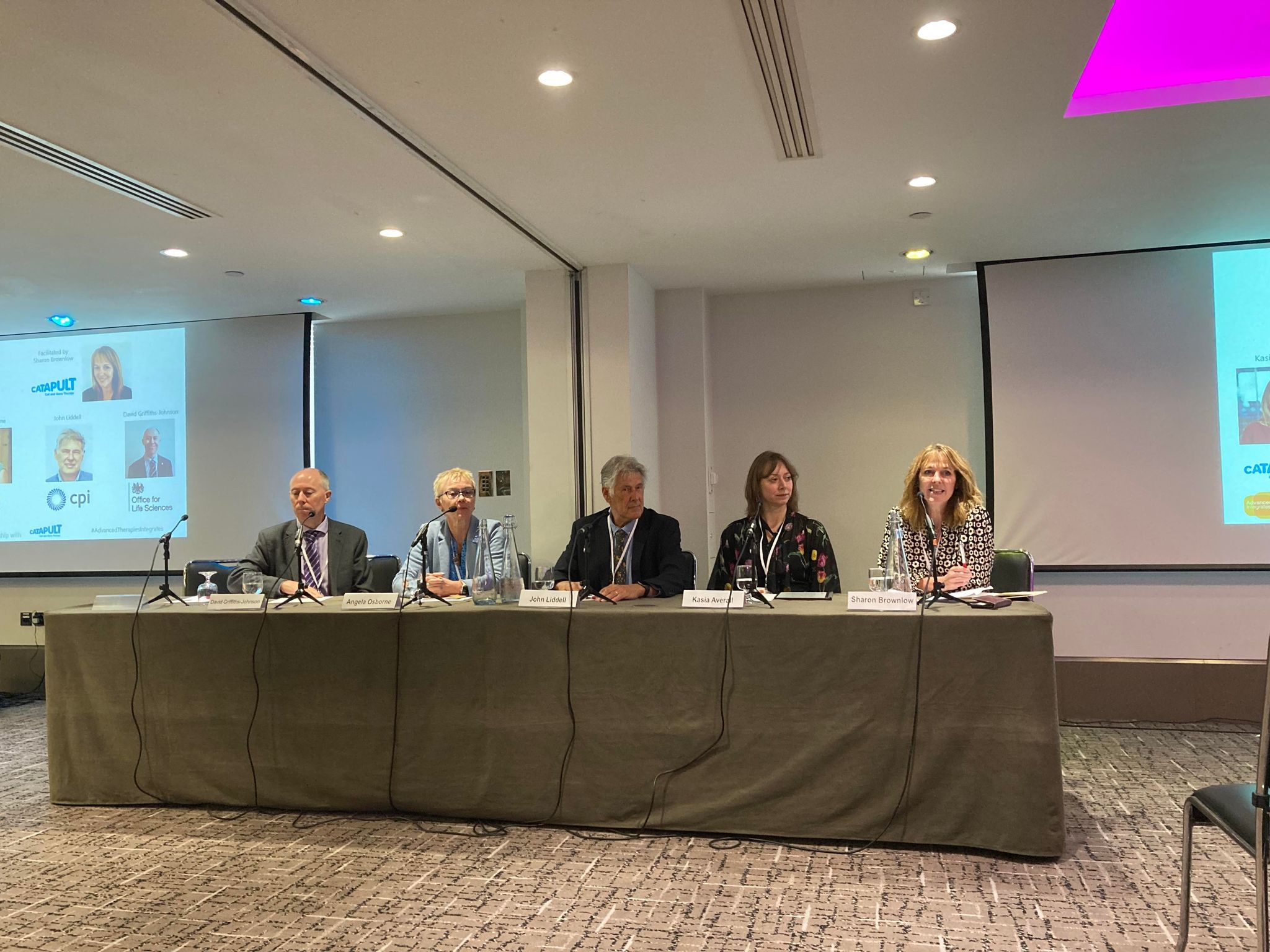
CELLULAR GROWTH – a focus on investment
“Engage early – a lot of this is about relationships and getting on the radar”
Beginning with the ‘Viable cells to viable sells’ session, led by Mike Lyne (NIHR Biomedical Research Centre), the panel shared both the perspectives of investors and innovators. As CEO & R&D Director of innovative companies, Joe Healey (NanoSyrinx) and Mustafa Munye (Complement Therapeutics) explained the journey to gaining initial seed funding. “It wasn’t until the first IP fell into place that we were remotely fundable. After that it happened quickly,” described Joe. Mustafa told a similar story – “it can take over a year to get initial funding, but once you have an investor, you automatically have additional credibility and a network – then it accelerates.” Switching to the perspective of investors, panellists discussed the desired qualities in early-stage companies. “We’re looking for good foundational science, clear medical need, with a plausible route between the two,” said Catriona Crombie (LifeArc). Jason Mellad (Start Codon), agreed with the need for “clear articulation of the unmet clinical need”, and introduced the importance of “an outstanding team.” The value of a team of skilled individuals was a strong theme throughout the session. “Companies are struggling to find the correct teams to put their innovation in place and drive it forward quickly,” explained Stefanos Theoharis (Former Bone Therapeutics SA), with Catriona outlining LifeArcs’s focus on training, apprenticeships, and MScs to fill the skills gap.
“It’s easier to sell a broken bridge because the bridge is already there. But trying to sell an early-stage idea means you’re selling something that doesn’t yet exist”
Discussion turned to pitching to investors in the ‘Pitch perfect: advancing therapies’ session, led by Sam Goldsmith (Cell and Gene Therapy Catapult). All panellists agreed on the importance of knowing your audience, understanding your investor, and getting in contact early. “Knowing your audience is key when pitching to investors,” explained Moin Saleem (University of Bristol), with Jenny Laird (Eli Lilly) adding that “a good pitch is paying attention to the questions asked and adjusting accordingly.” Speakers discussed the benefits of grants and venture capital investment. “Competition is now through the roof for getting grants,” stated Kerstin Papenfuss (Deep Science Ventures), with Raj Mehta (Apple Tree Partners) highlighting the support that comes from venture capital investment: “grant funding gives funding, but if you go to VCs you get a lot more than just money.” A key theme of the discussion was trust: “you can raise money from friends and family because they trust you. It’s the same with investors – you need to build trust and relationships,” said Marcelo Bravo (OXVax).
“Investors need to understand what the story is – there needs to be a clear story”
There was a strong focus on Venture Capital investors in the ‘VC judges: What is the X factor’ session, facilitated by Nathan Sigworth (CCX). “2021 was when the largest amount of capital was raised in the life science market. There’s been a pause on investment this year,” said Freddie Dear (Ascend Gene and Cell Therapies), pointing out the competitiveness of the market. All panellists agreed on the importance of building strong relationships with individuals within Venture Capitals, and discussed how best to get them on board. “Funds have a lot of money they’re willing to invest, but they need to see a clear story,” advocated Oliver Sexton (UKI2S). Chris Baker (LifeArc Ventures) stressed the importance of standing out – “the field is no longer brand new. Most of the time VCs and investors get bored because they might get 10 very similar ideas with only tiny modifications between them.” Both Dominic Schmidt (Advent Life Sciences) and Karolina Zapadka (Parkwalk Advisors) mentioned the importance of finding a good team and management structure with a clear two-way understanding of the commercial and financial aspects.
“There’s a key difference between conversation and dialogue – dialogue is two-way and lets the regulator ask you questions”
The Cellular Growth track finished with a discussion of ‘Healthy Economics for thriving ATMPs’ led by Panos Kefalas (Cell and Gene Therapy Catapult). The session began with a comprehensive presentation by Laura Beswick (Cell and Gene Therapy Catapult) explaining the Health Technology Assessment (HTA) landscape, taking into account clinical, regulatory and commercial considerations, with insights into clinical trial design and how to develop your value story. Steve Kappenthuler (Muvon Therapeutics) highlighted difficulties in communicating the value story when proposing expensive cell and gene therapies for non-deadly diseases that are currently being treated with relatively cheap devices: “you need to clearly prove the unmet clinical need.” Speakers agreed on the importance of addressing issues right from day 1. “At Rinri we’ve approached product development by trying to ask difficult questions and identify problems early,” told Simon Chandler (Rinri Therapeutics), with Paul Catchpole (ABPI) stating that “starting early has never been so important.” As head of regulatory strategy at Weatherden, Kirsty Wydenbach explained how early engagement is really useful to regulators: “regulators need companies to go in really early and put their novel idea on the table, no matter how early-stage, to start the dialogue.” All panellists praised the support of programs like the Innovation and Licencing Access Program (ILAP) in helping regulators support innovators.
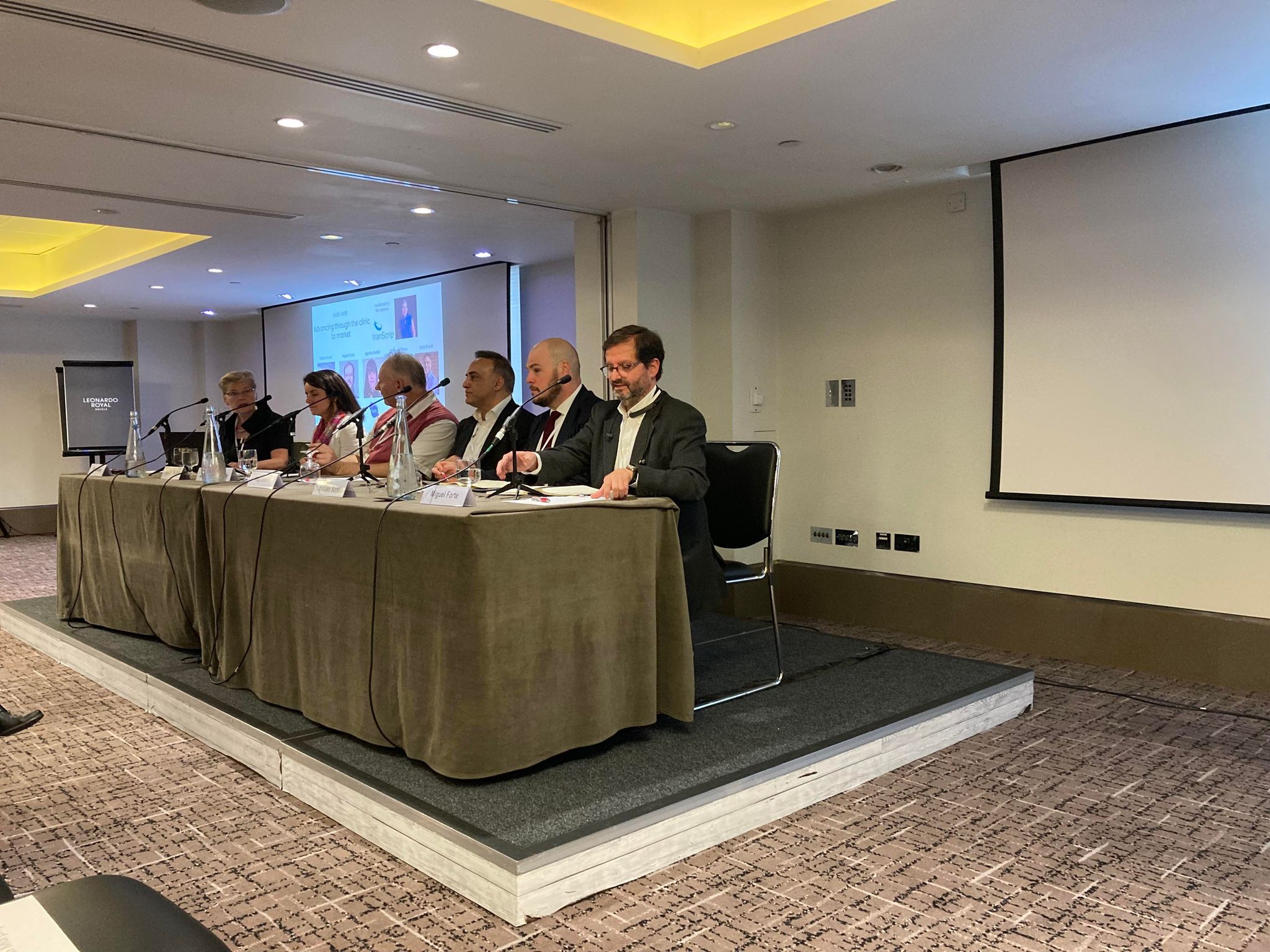
TECH TO TRANSLATE – a focus on innovative technologies
“What is my biggest concern today? Patient access”
In the ‘Advancing through the clinic to market’ session, led by Flic Gabbay (tranScrip), panellists discussed the factors to consider in order to get ATMPs to the patients who need them. A key theme was the need to adapt regulations, with insights from MHRA’s Jimmy McBlane. “If there’s a market of only 50-100 patients, then it may be questionable whether the current regulatory guidelines are the right ones to satisfy that market,” he explained, proposing the idea of a new, adaptable approach. Agathe Guillot (DLRC) also highlighted the challenges of therapies for such niche patient populations, stating that “the real challenge is trying to find the right pathway for very niche drugs for very few patients to get to market.” Miguel Forte (Bone Therapeutics) spoke of accessibility and manufacturability, emphasising the need for good risk-benefit analysis. Looking to the future, Raja Sharif (ATMPS Ltd) advocated for increased digitalisation and data: “when it comes to ATMPs, none of these great digital innovations are installed in the NHS. Why?” But to prepare for the future, William Scott (Newcastle University Medical School) highlighted the need to plan now: “look at what’s coming down the pathway so we can get systems prepared and adapt the regulations and legislations accordingly.”
“Right from the R&D phase, we have clinical translation in mind”
Experts discussed considerations for getting advanced therapies ready for First in Human trials in the ‘Prepare for patients’ session led by Terri Gaskell (Rinri Therapeutics). The conversation covered ‘the 5 Rs’: right target, right tissue, right safety, right patient, and right commercial potential. Panellists agreed in the value of having strong proof of product function and consistency: “demonstrate stability in storage. Demonstrate safety and efficacy with your critical quality attributes. Test for reproducibility,” instructed Mustafa Munye (Complement Therapeutics). Neelam Panchal (Cell and Gene Therapy Catapult) agreed, with two imperative words of advice: “Document everything.” Early planning was another key theme, with Fraser McBlane (Novartis) advocating to “plan months in advance to get into schedule for production.” And to add to the 5 Rs, conversation turned to regulations, with Lee Coney (Cell and Gene Therapy Catapult) advising to “interact with the regulator early on”, and MHRA’s Jimmy McBlane explaining that innovators need to provide two things – evidence that the product will work, and evidence that the product is safe.
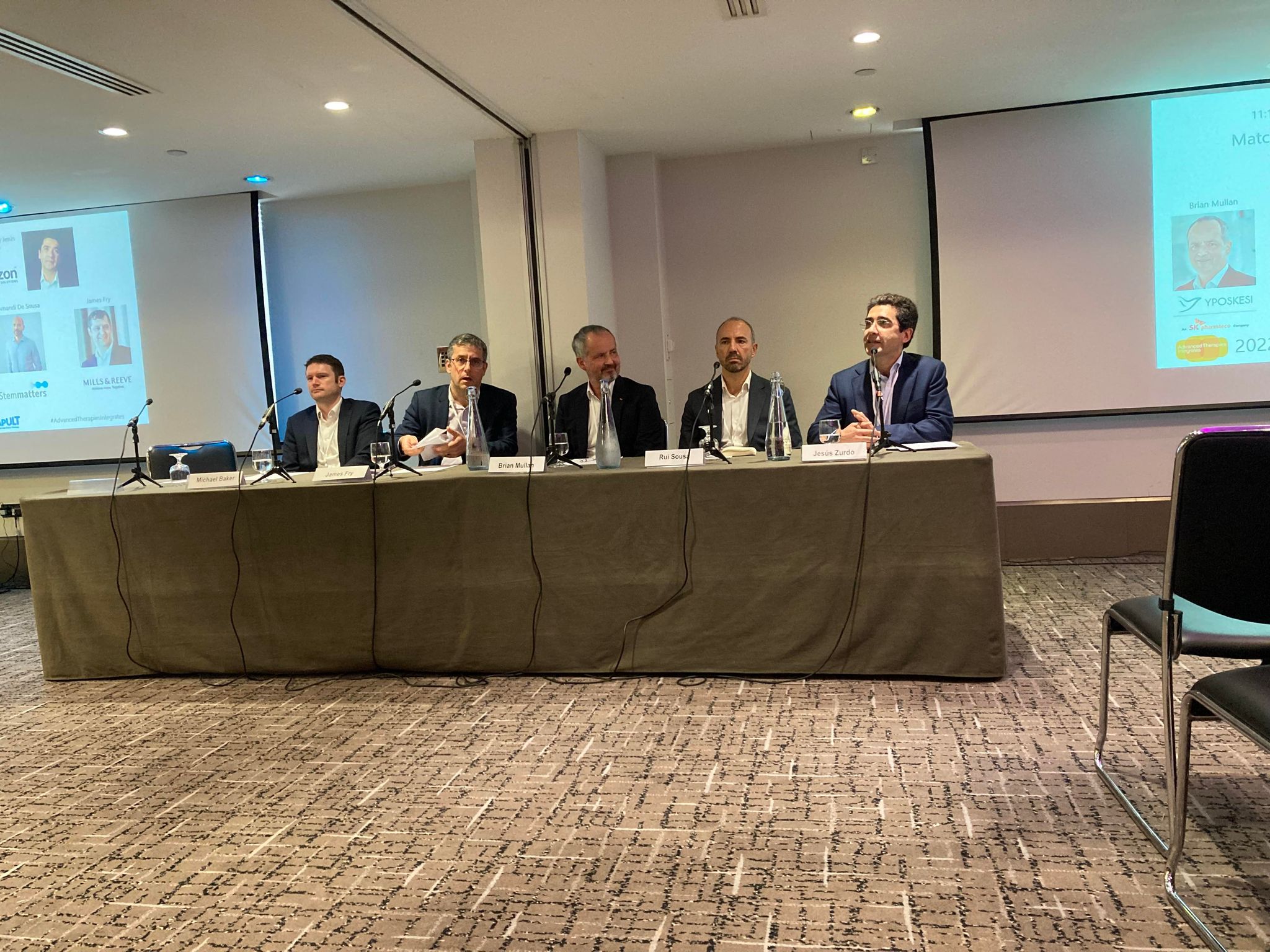
MAKING IT – a focus on manufacturing
“It’s a lot of work but it’s an investment into your future”
Process Analytical Technology was the focus of the ‘Innovate to elevate’ panel, facilitated by Lee Dunham (Cell and Gene Therapy Catapult). Conversation centred around two key challenges: standardisation across analytical modalities, and getting the analytical process online. “There are so many different therapies and modalities with different methods of analytics – the key is to come up with a standard framework,” said James Kusena (MicrofluidX), “having analytics online with feedback loops means you can make adjudgments before it’s too late.” Expanding this idea to fully automated systems, Andrea Cusack (Leon-nanodrugs) highlighted the benefits that come from removing risk associated with the human factor. Giving an engineer’s perfectives, Steven Binninger (Autolomous) stated that the biggest bottlenecks he sees are in scalability and reliability. Andy Lewin (Ascend Gene and Cell Therapies) picked up on the point of scalability from a CDMO perspective: “the current challenge for CDMOs is to get speed, turnaround, and scalability.” The discussion ended with advice for early-stage companies, with Ian Anderson (Lonza) sharing the perspective of an academic transitioning to the CMC space and entering a Global Biologics organization. James advised on early data collection: “If you start collecting data as early as possible you can fine tune later, but you cannot do this in phase 3 without any previous data.”
“The opportunities in the CDMO space are there for the innovator, it’s about choosing the right partner”
Not all manufacturing can be done in-house, and partnering was the focus of the ‘Matchmaking’ session facilitated by Jesús Zurdo (Horizon Discovery). Panellists discussed the challenges for CDMOs in a fast-moving sector with so many different innovative platforms. “Addressing the diversity of technologies and platforms within this sector is a challenge for small CDMOs that want to provide integrated services,” explained Rui Sousa (Stemmatters). However, Brian Mullan (Yposkesi) highlighted a benefit of this diversity: “as CDMOs we see a lot of projects and gather learnings of lots of ways of doing things, meaning we can nudge innovators towards a platform and explain how it meets their needs.” A key take-home message was the importance of aligning the expectations of innovators and CDMOs early on. “A lot of issues and conflicts further down the line are about a mis-alignment of expected outcomes,” explained James Fry (Mills & Reeve). Michael Baker (FUJIFILM Diosynth Biotechnologies) concurred, stating that “the times when partnerships don’t go well in the long term are because of a misunderstanding of expectations vs reality.” Ending with shared learnings, Brian advised to “stay on top of your partnerships – your reliable partner today could have issues tomorrow, so you need build reserves into the system.”
“The policy around manufacturing parts is something Government could take another look at to see what type of support we could provide”
In-house vs out-house manufacturing is not a black and white decision, and the flexibility of manufacturing arrangements was discussed in the ‘ATMP: house blend’ session led by Sharon Brownlow (Cell and Gene Therapy Catapult). Angela Osborne (eXmoor Pharma Concepts) explained the different manufacturing needs of early and later stage companies: “at the earliest stage, you don’t have money to manufacture in-house so that’s when you partner. Then, as soon as you get good clinical results, the next question we get is ‘can you build me a manufacturing facility, I want to do it in-house?’” Kasia Averall (Cell and Gene Therapy Catapult) praised the importance of the team. “A key consideration is the people who are going to manufacture this for you,” she explained, describing the complexity of GMP manufacturing of advanced therapies. Reflecting on this complexity, John Liddell (CPI Biologics) advised innovators to have a degree of knowledge of the industry-standard approach before engaging with the CDMO. Adding a government perspective, David Griffiths-Johnson explained the role of the Office for Life Science’s Investment and Engagement Team in attracting growth and skills into this sector. The session ended with discussion of the new modular build model. “The modular build model is game-changing in the UK,” said Kasia, explaining the concept of flexible manufacturing facilities that CDMOs can lease. “A strength of the UK is the flexibility … you can in-house a bit, out-house a bit, lease your own manufacturing facilities for a bit, cluster…”
“There’s a large opportunity for software engineers to create value in the industry”
The Making It track ended with the ‘Oh Industry 4.0’ session, facilitated by Kwok Pang (Autolomous).
Panellists discussed the benefits of digitisation, with Nick Stephens (The RSA Group) explaining how digital tools will enable us to manufacture faster and more accurately: “if you don’t have digitalisation, somebody else will outcompete you,” he warned. Gaurav Venkataraman (Trisk Bio) mentioned the reliability benefits of automation, explaining how “digitalisation is important when you’re scaling up to reduce cost and give consistency in manufacturing.” However, implementing digitalisation is not without challenges. “What do you measure, how do you measure it, how do you exploit the data?” asked Antoine Espinet (MicrofluidX). Adding a CDMO point of view, Verity Nancollis (Pharmaron) explained the need for a well thought out digitalisation strategy that matches the business strategy. “Don’t just digitalise for the sake of it,” she said, advising to think of the end goal not now, but years down the line. The discussion ended with the future of decentralised, localised manufacturing. “Decentralised manufacturing is the future for ATMPs because you can’t always bring the patient to where the therapy is,” said Andreea Iftimia-Mander (Biomatics).
“We need to exchange ideas, form partnerships, and make new developments”
Alongside the wide variety of panel discussions, the event featured a bustling hallway of product and service exhibitions. The incredible support opportunities for innovators and bioscience organisations were on show with event partner Cell and Gene Therapy Catapult, alongside CPI and Biomatics. YSDS explained their unique logistics solutions for the Life Science industry. And revolutionary in-house R&D products were on display, with endotoxin detection products from the Associates of Cape Cod International, mass photometry technology from Refeyn, and automation technologies for highly efficient single-cell cloning from Iota Sciences.
The day ended with concluding remarks from Sharon Brownlow (Cell and Gene Therapy Catapult), who left attendees excited for the future as they engaged in a vibrant networking and drinks reception.
“The sheer number and diversity of people and companies at Advanced Therapies Integrates 2022 reflects the growth and promise of this sector,” said Samuel Thangiah, LSI Executive Director, “we hope delegates left with new insights and connections that will drive their projects forward.”
“We want to thank all speakers, sponsors, partners and attendees for their continued support,” added LSI Executive Director Christopher Watt.
All videos from the day’s panel sessions can be found on online for Cellular Growth, Tech to Translate and Making It, and Life Science Integrates looks forward to seeing delegates at Advanced Therapies Integrates 2023 next October, and at Pharma Integrates later this year.
